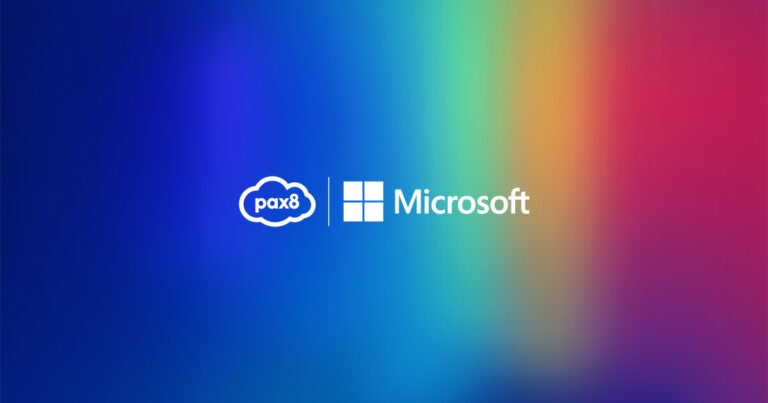Artificial Intelligence (AI) has begun revolutionizing the way in which we do work. With the power to complement, accelerate, and sometimes stand in for menial tasks, organizations of all sizes have understandably begun implementing AI into their daily operations. However, it’s important for small- and medium-sized businesses (SMBs), as well as the managed service providers (MSPs) that serve them, to ensure they’re leveraging AI responsibly. In this blog, we’ll explore the concept of responsible AI systems and what is needed to implement them.
What is responsible AI?
AI can be traced all the way back to the 1950s and Alan Turing’s proposal for a test of machine intelligence, “The Imitation Game.” Only recently has AI entered mainstream usage with the emergence of tools such as Stable Diffusion, ChatGPT, Anthropic, Microsoft Copilot, and OpenAI’s image-generation tool, DALL-E.
Now, AI has begun impacting how we look at how we work on a daily basis. Although we typically only talk about the positive aspects that AI brings to our teams, AI also poses significant challenges and risks, such as bias, discrimination, privacy, security, accountability, and accuracy. Thus, it’s important to ensure your AI systems are designed and deployed in a responsible manner—so it aligns with your and your clients’ values and those of society.
Responsible AI is not a fixed set of rules or standards, but rather a dynamic and context-dependent process that requires continuous evaluation and improvement. Responsible AI aims to maximize the benefits and minimize the risks of AI, while respecting the rights and interests of all stakeholders, including users, developers, regulators, and society at large.
What are the principles and practices of responsible AI?
Because AI is so new to most organizations and industries, there hasn’t been a universal agreement on the exact principles and practices of responsible AI, as different organizations and communities may have different perspectives and priorities. But, as you guide your clients in adopting AI within their organization, here are some common themes and frameworks that have emerged in the literature and practice of responsible AI:
-
- Human-centered: AI systems should be designed and deployed with human beings in mind. They should be designed to respect human autonomy, diversity, and agency. AI systems should also be compatible with human values and norms, and they should be sensitive to the cultural and social contexts in which they operate to avoid bias and discrimination as much as possible.
-
- Beneficial: AI systems should aim to create positive value and impact for individuals and society, and they should avoid or mitigate any potential harm or risks. AI systems should also be aligned with the goals and preferences of their users and stakeholders. Making them responsive to their feedback and concerns is crucial.
-
- Fair: AI systems should treat all people fairly and equitably, meaning you need to avoid discrimination or harm on the basis of any protected attributes, such as race, gender, age, disability, or religion. AI systems should also ensure that their outcomes and decisions are consistent, accurate, and reliable, and that they do not introduce or amplify any biases or errors.
-
- Transparent: AI systems should be understandable and explainable, both in terms of their inputs, outputs, and processes, as well as their goals, assumptions, and limitations. AI systems should also provide meaningful and timely information and communication to their users and stakeholders, so they can question and challenge their results and actions.
-
- Accountable: AI systems should be responsible and accountable for their behavior and impact, both to their users and stakeholders, as well as to the relevant authorities and regulators. AI systems should also have mechanisms to monitor, audit, and evaluate their performance and compliance, so that those in charge of them can work quickly to remedy any errors or harm that may occur.
How to implement responsible AI
Implementing responsible AI is not a one-time or one-size-fits-all solution, but rather an ongoing and iterative process that requires collaboration and coordination among multiple teams and disciplines.
With Microsoft Copilot, implementation can be broken down into several buckets, which we’ll detail below.
Assess
Identify and analyze the potential benefits and harms of implementing Copilot, as well as any ethical issues that may arise. Take note of each of these benefits and risks, as well as their specific context and use case.
How Microsoft can help: Microsoft took these issues seriously when it developed Copilot. To get more details, read Microsoft’s guiding principles for responsible AI.
Design
Take the above assessment and let it drive how you implement AI for the organization. What data will you let Copilot access to maximize the benefits while minimizing the risks you’ve identified? Who will get to use Copilot, in what use cases, and to what degree? Once you work with stakeholders to answer these questions, tailor the Copilot deployment accordingly.
How Microsoft can help: Microsoft designed Copilot to maximize commercial data protection. Some of these features include the fact that Copilot chats aren’t saved, no one at Microsoft can view your data, and your data isn’t used to train the large language models (LLMs) involved.
Deploy
With your ethical design in place, deploy and operate Copilot following best practices and guidelines of the domain and industry. This may involve complying with applicable laws and regulations, such as HIPAA and GDPR, depending on the organization and industry. Consider instituting a pilot program before making it widely available to minimize risks.
How Pax8 can help: We offer a wide range of training classes and events on Microsoft Copilot as well as how to safely configure it and best practices. Take the first step by reading this blog article.
Evaluate
Evaluate and monitor the performance and impact of AI systems, using appropriate metrics and indicators. Collect feedback and data from users and stakeholders, and feed that back into your design—this is especially important if you’re using a pilot program, as it will be easier to track changes and their impact with a small pool of dedicated users.
How Copilot can help: Start with a Restricted SharePoint and a couple of users. This will allow you to keep a small, focused group to learn before opening it up to a larger group of individuals.
Improve
Improve and update AI systems based on the evaluation and feedback you receive. Implement corrective and preventive actions to address any issues or gaps that may arise, ideally before expanding the pool of employees who are using Copilot as well as its functionality and use cases.
How Pax8 can help: Visit Pax8 Academy to ensure you’re up to speed on critical issues such as cybersecurity, and reach out to one of our representatives to discuss any issues you may be having with your Copilot deployment.
Optimizing your AI deployment, responsibly
While AI presents some risks for organizations, they shouldn’t miss out on its potential. As an MSP, you can help your clients minimize these risks while maximizing its adoption to increase efficiency and output, helping them stay competitive.
Pax8 is here to help you stay ahead of the curve on all things AI. Check out our Pax8 Growth Track for Microsoft Copilot to continue to make the most of this critical new solution and everything it can do for you and your clients.





